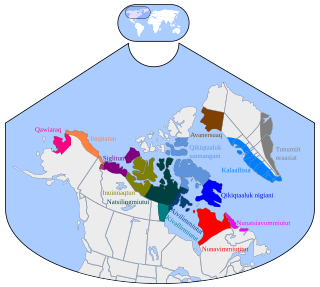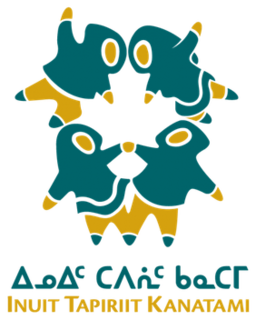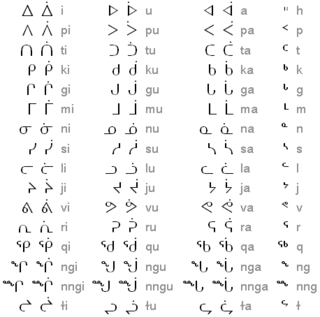 W
WThe Inuit languages are a closely related group of indigenous American languages traditionally spoken across the North American Arctic and to some extent in the subarctic in Labrador. The related Yupik languages are spoken in western and southern Alaska and in the far east of Russia, but are severely endangered in Russia today and spoken only in a few villages on the Chukchi Peninsula. The Inuit live primarily in three countries: Greenland, Canada, and the United States.
 W
WAivilik, also known as Aivilingmiutut, Aivilimmiutut, Aivillirmiut, and Kangiqłniq, is a Canadian dialect of the Inuit language spoken along the northwestern shores of Hudson Bay in Nunavut. The governments of Nunavut and the Northwest Territories generally consider it to be a dialect of Inuktitut, due to its location in Nunavut, as do some linguists, but it is instead sometimes classified as a dialect of Inuvialuk. However, Inuktitut and Inuvialuk form a dialect continuum with few sharp boundaries.
 W
WGreenlandic is an Eskimo–Aleut language with about 56,000 speakers, mostly Greenlandic Inuit in Greenland. It is closely related to the Inuit languages in Canada such as Inuktitut. It is the most widely spoken Eskimo-Aleut language.
 W
WInuit Tapiriit Kanatami, previously known as the Inuit Tapirisat of Canada, is a nonprofit organization in Canada that represents over 65,000 Inuit. Their mission is to "serve as a national voice protecting and advancing the rights and interests of Inuit in Canada."
 W
WInuktitut, also Eastern Canadian Inuktitut, is one of the principal Inuit languages of Canada. It is spoken in all areas north of the tree line, including parts of the provinces of Newfoundland and Labrador, Quebec, to some extent in northeastern Manitoba as well as the Northwest Territories and Nunavut. It is one of the aboriginal languages written with Canadian Aboriginal syllabics.
 W
WInuktitut syllabics is an abugida-type writing system used in Canada by the Inuktitut-speaking Inuit of the territory of Nunavut and the Nunavik and Nunatsiavut regions of Quebec and Labrador, respectively. In 1976, the Language Commission of the Inuit Cultural Institute made it the co-official script for the Inuit languages, along with the Latin script.
 W
WInuktun is the language of approximately 1,000 indigenous Inughuit, inhabiting the world's northernmost settlements in Qaanaaq and the surrounding villages in northwestern Greenland.
 W
WInuttitut, or Inuttut is a dialect of Inuktitut. It is spoken across northern Labrador by Inuit people, whose traditional lands are known as Nunatsiavut.
 W
WKivalliq, also known as Kivallirmiutut, Caribou Eskimo, or formerly as Keewatin, is a dialect of Eastern Canadian Inuktitut which is spoken along the northwestern shores of Hudson Bay in Nunavut.
 W
WNetsilik, Natsilik, Nattilik, Netsilingmiut, Natsilingmiutut, Nattilingmiutut, Nattiliŋmiutut is an Inuit language variety spoken in western Nunavut, Canada by Netsilik Inuit.
 W
WTunumiit oraasiat or East Greenlandic is a variety of Greenlandic spoken in eastern Greenland by the Tunumiit. It is generally considered a divergent dialect of Greenlandic, but verges on being a distinct language. The largest town where it is the primary language is Tasiilaq on Ammassalik Island, with the island's name being derived from the West Greenlandic name of the town.
 W
WWest Greenlandic, also known as Kalaallisut, is the standard dialect of the Greenlandic language, spoken by the vast majority of the inhabitants of Greenland, as well as by thousands of Greenlandic Inuit in Denmark proper. It was historically spoken in the southwestern part of Greenland, i.e. the region around Nuuk.